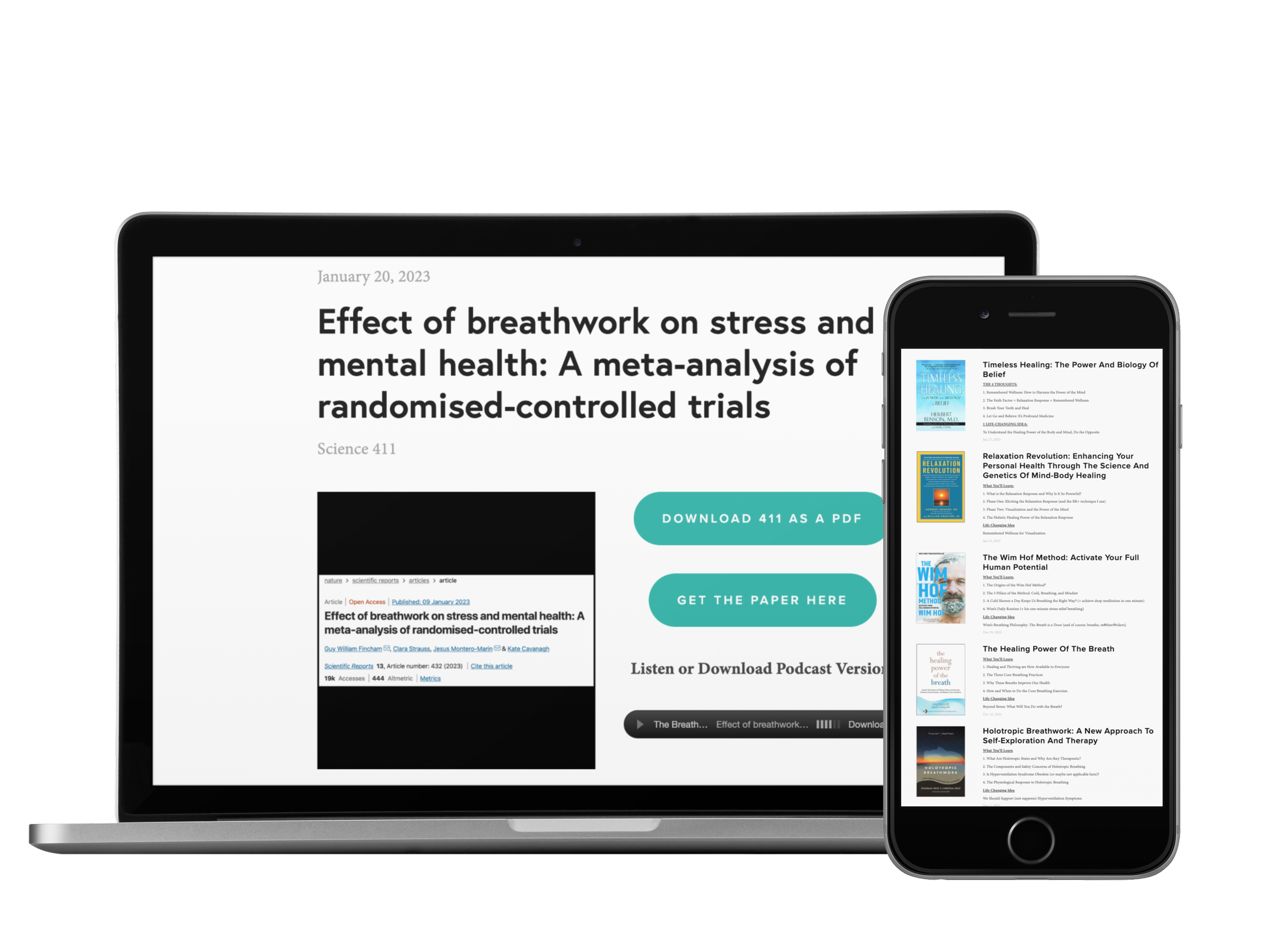Reading Time: 1 min 41 sec
I hope the next 20’ish breaths are the most nourishing of your day.
4 THOUGHTS
1. Most People Don’t Realize This
“…most people don’t realize the profound potential the breath has for mental health.
How we breathe impacts our heart rate, blood pressure, emotions, and memory. Our breathing patterns influence the function of many critical areas of the brain. Breathing influences how we perceive the world, think, pay attention, remember, and feel.
Our neurons respond to the rhythm of our breath: When we alter our breathing, we can control the activity of our brain cells. Research shows you can rapidly change your emotions using just your breath.”
– Emma Seppälä, Ph.D., Sovereign
Of course, if you’re reading this, you’re not most people—and you probably know most of this. But it’s always refreshing to read it from a slightly different perspective 👏
2. Try to Be Better?
“It is easier to try to be better than you are than to be who you are.”
– Marion Woodman, found in Meditations for Mortals
What a perfect reminder: Instead of always striving to improve ourselves, we can instead seek to simply be ourselves. That is, after all, what breathing, meditation, and mindfulness are all about 🙏
3. Deep Physical and Psychological Changes
“As the breath is the link between the body and mind, it can intervene in the activities of either level. With increased awareness and control of the subtle aspects of breathing, these interventions can affect deep physical and psychological changes.”
– John Clarke, MD, Science of Breath
I’ve shared this one before, but it’s an excellent reminder: Because the breath connects body and mind, it can elicit powerful changes in both.
4. Enjoying the Symphony
“Do you want to enjoy a melody? Do you want to enjoy a symphony? Don’t hold on to a few bars of the music. Don’t hold on to a couple of notes. Let them pass, let them flow. The whole enjoyment of a symphony lies in your readiness to allow the notes to pass.”
– Anthony de Mello, Awareness
Same with life 🎵
1 Quote
“The art of being wise is knowing what to overlook.””
1 GOOD BOOK
Passage Meditation by Eknath Easwaran
If you’re tired of reading the same old things about meditation, here’s an approach I can almost promise you haven’t encountered. And even if you don’t adopt Easwaran’s 8-point program, his profound yet practical wisdom is sure to change how you think and live 🙏
In good breath,
Nick Heath, T1D, PhD
“Breathing is the compound interest of health & wellness.”
Enjoy these posts? Donate to say thanks!
P.S. Imagine hating on me and…
The Breathing App for Diabetes
This is the first program specifically made for people with diabetes to help manage their stress through breathing and mindfulness practices. In addition to the amazing program inside the app, we have some really neat things coming up, so sign up now!
Amazon Associate Disclosure
I’ve been recommending books for almost 6 years. Yet somehow, I just discovered that I could be an Amazon affiliate [face-palm]. In any case better late than never. Now, any Amazon link you click is an affiliate link. As an Amazon Associate, I earn from qualifying purchases. So, if you’d like to support my work, buying books through these links is helpful : )
* An asterisk by a quote indicates that I listened to this book on Audible. Therefore, the quotation might not be correct, but is my best attempt at reproducing the punctuation based on the narrator’s pace, tone, and pauses.




